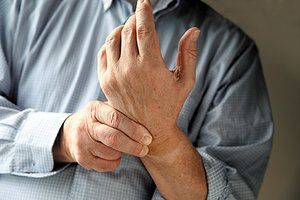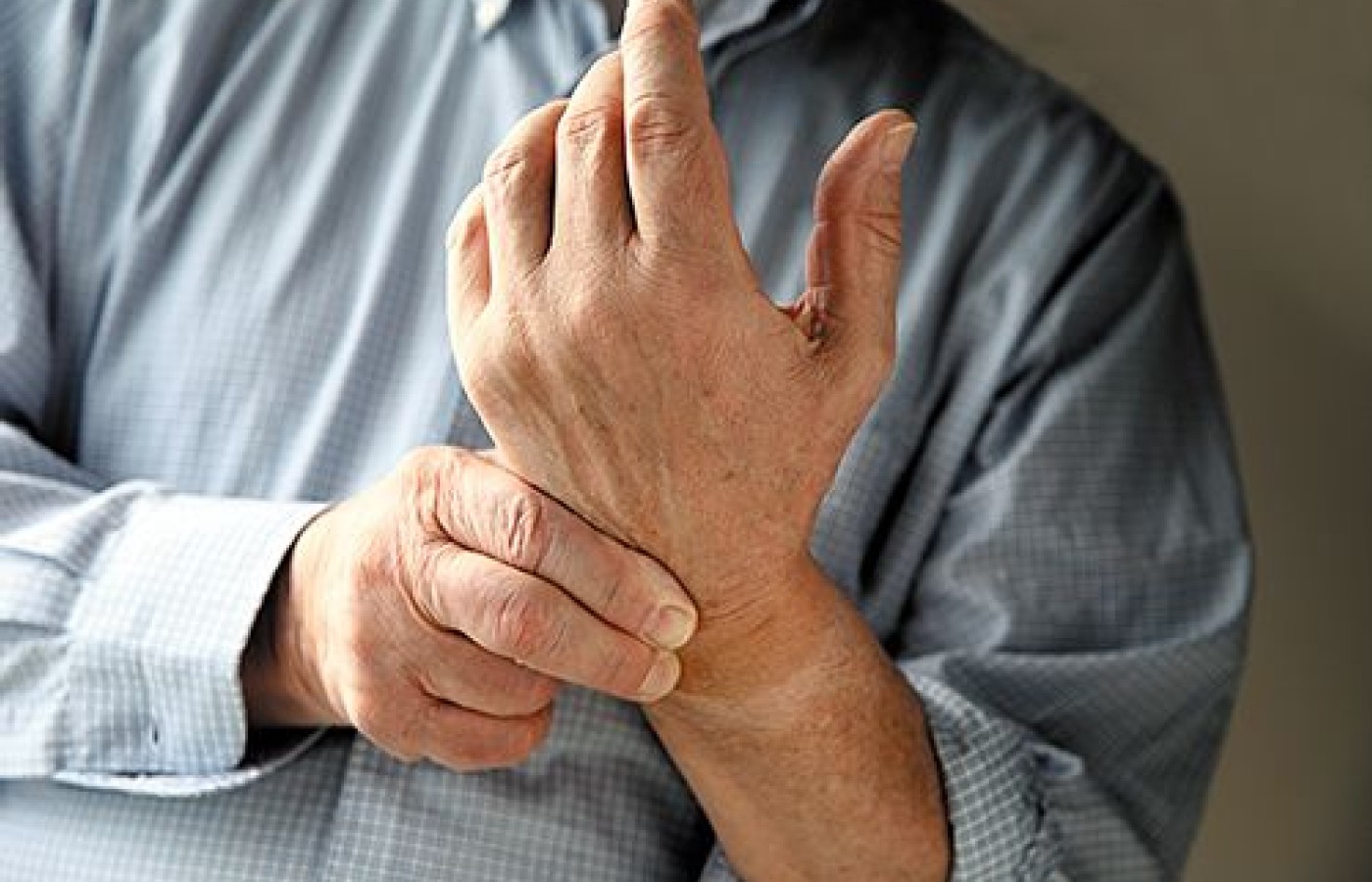Some doctors thrive in a personality-based clinic and have a loyal following no matter what services or equipment they offer, but for most chiropractic offices who are trying to grow and expand, new equipment purchases help us stay relevant and continue to service our client base in the best, most up-to-date manner possible. So, regarding equipment purchasing: should you lease, get a bank loan, or pay cash?
Treating CTS and Wrist Tendinitis of Myofasial Origin
Carpal tunnel syndrome (CTS) is the most common and most clinically significant of all nerve entrapment syndromes,1 present in 2.7 percent of the adult population.2 Numbness and paresthesia along the distribution of the median nerve in the hand, i.e., the thumb, index, major and half the ring finger, are common symptoms related to CTS.3
Symptoms and concurrent discomfort often peak at night and may wake the patient several times. To ease pain and discomfort, he/she often will shake the affected hand(s) and flex the fingers vigorously.3
Conservative allopathic treatment usually includes wrist support, change in activity and anti-inflammatory medication. If symptoms are not relieved by conservative approach within a six-month period, cortisone injection may be used. Wrist surgery, which involves cutting the transverse ligament of the wrist, is considered where symptoms remain pronounced and sensitive functions decline.4-5
The three main reasons why patients require surgery for CTS are night pain (36 percent), hand numbness (21 percent) and relief of daytime pain (13 percent).6 Almost a third of the patients who have undergone CTS surgery experience persistent or recurrent symptoms after surgery and report that the initial improvement associated with CTS surgery is lost within less than two years.6 On the other hand, when CTS is not treated surgically, 22 percent of patients continue to have symptoms as long as eight years later.7

Ischemic Compression for CTS
The rationale for using ischemic compression therapy along the median nerve in the treatment of CTS is as follows: In patients suffering from CTS, the median nerve is twice (2.1 times) its normal size when it enters the carpal tunnel.8 The present author hypothesizes that part of the cause of the related edema is noxious myofascial sites along the median nerve. Along its course, part of the median nerve enters the axilla of the shoulder, runs immediately adjacent to the biceps, and descends within the hollow of the elbow under the pronator teres muscle and the bicipital aponeurosis.
In a randomized clinical trial by the present author,9 there were trigger points (TrPs) and hypertonicity along the biceps of every participant. TrPs in the hollow of the elbow were also present in all cases. TrPs in the axilla of the shoulder were present in around 50 percent of participants.
The following hypothesis explains why the symptoms of STC are worse during the night: In skeletal muscles, the blood flow is extremely variable and is tied to activity level. At rest, only 25 percent of the capillaries are open. With exercise, blood flow can increase up to 10 times, at which point almost all capillaries open up to admit more blood.10
In our trial, the affected biceps (principally) was in partial contraction because of the TrPs. It is well-known that TrPs in a muscle cause a partial contraction.11
This contraction state results in higher consumption of oxygen and glucose. However, during the night, with blood flow being much less, the supply of oxygen and glucose diminishes and lactic acid accumulates, accentuating the contraction state. Shaking the hand vigorously increases the blood flow and eliminates the lactic acid. Consequently, the biceps relaxes partially, the median nerve is less irritated, and the numbness and pain diminish.
Treatment Protocol / Discussion
Our trial aimed to determine the efficacy of 15 treatments by ischemic compression, involving one thumb on the other on the TrPs localized along the biceps, at the hollow of the elbow and at the axilla of the shoulder. Our study population included 55 patients suffering from daily CTS for at least three months.
After 15 treatments, diminution of symptoms was greater in the experimental group (37 patients) than in the control group (18 patients): 42 percent versus 26 percent amelioration. In a questionnaire establishing the patient's perceived amelioration of symptoms using a scale from 0-100 percent, results demonstrated 67 percent amelioration for the experimental group compared to only 50 percent for the control group. Of interest, 89 percent of the experimental group felt evident amelioration within six treatments. Six months later, the amelioration was still significant.
All patients in this study presented with multiple trigger points and taut bands along the biceps and at the biceps aponeurosis (in the hollow of the elbow), at the pronator teres muscle and at the axilla of the shoulder. All patients were examined for TrPs in these four areas while in a supine position with the arm spread along the body – except in the case of the axilla of the shoulder, for which the patient's hand was positioned under their head. In this scenario, treatment should be done over the clothes (question of hygiene).
Most of the time, when the TrP of the axilla is treated, one thumb on the other for 8 seconds, the patient feels a neurologic irradiation directly to the fingers. The treatment along the biceps consists of two- or three-second pressure on every 2 centimeters from the upper part of the biceps to the elbow. The pressure is painful, but bearable, and should be repeated at each visit until the hypertension is completely gone. At the elbow, the TrP(s) should be treated for 8 seconds.
Numbness at the tips of the fingers will usually respond to the same treatment.
In cases of ulnar neuropathy, in which the numbness is felt at the little finger and half the ring finger, the trigger points are normally at the lower part of the triceps. A good way to treat that area is with the patient kneeling perpendicular to the table, forehead on the asymptomatic arm, with the symptomatic arm stretched along the table and the hand turned in such a way as to put the triceps in evidence.
In chronic cases, 10 to 15 treatments may be necessary to get rid of these problems. Some patients work too much all the time; this has to be discussed with the patient so doctor-patient can brainstorm effective ways to reduce recurrence of symptoms.
In up to 10 percent of older patients, some TrPs are at the inside of the wrist, which could contribute to CTS. The cause may be a trauma; if the CTS has been present for years, there could also be arthritic irritation.
Examination of the wrist consists of forced flexion of that wrist with the doctor's two thumbs (side by side) on the inside of the articulation while using his/her other fingers to force the flexion. If a hypersensitivity is present, the test is positive.
Treatment is like the examination, except the forced flexion is kept at the patient's tolerance for 8 seconds. This mobilization is repeated at each visit until there is no more irritation.
In my experience, this approach to treating CTS is very efficacious and in about 50 percent of the cases, the patient feels amelioration the night following the first treatment.
Wrist Tendinitis: Examination and Treatment With Ischemic Compression
Many of my patients also present with wrist tendinitis. Ischemic compression combined with mobilization is effective in just about every case. Our examination is done with the patient supine, the two thumbs of the practitioner applied on the inside of the wrist. The fingers of the two hands force flexion of the symptomatic wrist while at the same time pressing vertically with the thumbs. If that produces pain, then the examination is positive.
As with CTS, treatment is exactly like the examination, except that it lasts 8 seconds, and the pressure and the flexion are maintained without moving, to the maximum of the patient's pain tolerance. The treatment has to be careful and delicate, and we have to be very attentive to the patient's reaction. It has to be painful, but bearable, and repeated at each visit until there is no irritation.
The examination and treatment of wrist extension is the same as for the flexion, except that it is done with the hand in pronation. To examine the rotation of the wrist, the contact with the thumb is on the pisiform bone. While forcing the rotation, maintain the pressure for 8 seconds.
These three examinations are carried out in all cases of wrist tendinitis, and treatment administered accordingly. Just about every patient has some pain when we examine the wrist, but the symptoms are present only above a certain level of irritation. Some TrPs could be above the aforementioned sites, at the distal extremity of the radius and cubitus.
These sites should be examined attentively if irritation of the previous sites has been eliminated, but the patient still has some pain in his/her wrist. Often the patient will pinpoint the remaining TrPs. That area has to be examined with a strong thumbtip pressure, one thumb on the other. All hyperirritable TrPs should be treated with 8 seconds of pressure.
These TrPs may be present anywhere on the carpal bones, as well as at the carpophalangeal or interphalangeal articulations. We treat these articulations with the patient's hand flat on the table, keeping pressure vertical and bearable. Normally, five to 10 visits may be necessary in order to get rid of these irritations.
References
- Nordstrom DL, Vierkant RA, DeStefano F, et al. Risk factors for carpal tunnel syndrome in a general population. Occup Environ Med, 1997;54:734-740.
- Atroshi I, Gummersson C, Johnson R. Prevalence of carpal tunnel syndrome in the general population. JAMA, 1999;282:153-158.
- Phalen GS. The carpal tunnel syndrome. Clinical evaluation of 598 hands. Clin Orthop Relat Res, 1972;83:29-40.
- Practice parameter for carpal tunnel syndrome (summary statement). Report of the Quality Standard Subcommittee of the American Academy of Neurology. Neurology, 1993;43:2406-9.
- Keller RB, Largay AM, Soule DN et al. Maine carpal tunnel study: small area variations. J Hand Surg (Am), 1998;23:692-6.
- Bessette L, Keller RB, Liang MH et al. Patients' preferences and their relationship with satisfaction following carpal tunnel release. J Hand Surg (Am), 1997;22:623-620.
- DeStefano F, Nordstrom DL, Vierkant RA. Long-term symptom outcomes of carpal tunnel syndrome and its treatment. J Hand Surg (Am), 1997;22:200-10.
- Mesgarzadeh M, Schneck CD, Bonakdarpour A. Carpal tunnel: MR imaging. Part 1. Normal anatomy. Radiology, 1989;171:743-8.
- Hains G, Descarreaux M, Hains F. A randomized controlled ( intervention ) trial of ischemic compression therapy for chronic tunnel syndrome. J Can Chiropr Assoc, 2010;54(3).
- Marieb EN. Essentials of Human Anatomy and Physiology, 2nd Edition. Benjamin / Cummings Publishing, 1992.
- Simons DG. Review of enigmatic MTrPs as a common cause of enigmatic musculoskeletal pain and dysfunction. J Electromyography Kinesiol, 2004;14:95-107.



